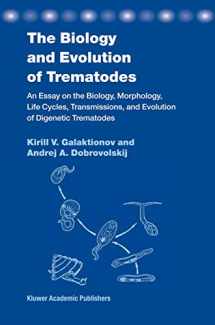
The Biology and Evolution of Trematodes: An Essay on the Biology, Morphology, Life Cycles, Transmissions, and Evolution of Digenetic Trematodes
Book details
Summary
Description
The book by K. V. Galaktionov and A. A. Dobrovolskij maintains the tra- tion of monographs devoted to detailed coverage of digenetic tr matodes in the tradition of B. Dawes (1946) and T. A. Ginetsinskaya (1968). In this - spect, the book is traditional in both its form and content. In the beginning (Chapter 1), the authors provide a consistent analysis of the morphological features of all life cycle stages. Importantly, they present a detailed char- terization of sporocysts and rediae whose morphological-functional orga- zation has never been comprehensively described in modern literature. The authors not only list morphological characteristics, but also analyze the functional significance of different morphological structures and hypothesize about their evolution. Special attention is given to specific features of m- phogenesis in all stages of the trematode life cycle. On this basis, the authors provide several original suggestions about the possible origins of morp- logical evolution of the parthenogenetic (asexual) and the hermaphroditic generations. This is followed by a detailed consideration of the various m- phological-biological adaptations that ensure the successful completion of the complex life cycles of these parasites (Chapter 2). Life cycles inherent in different trematodes are subject to a special analysis (Chapter 3). The authors distinguish several basic types of life cycles and suggest an original interpretation of their evolutionary origin. Chapter 4 features the analysis of structure and the dynamics of trematode populations and is unusual for a monograph of this type.


We would LOVE it if you could help us and other readers by reviewing the book
Book review



